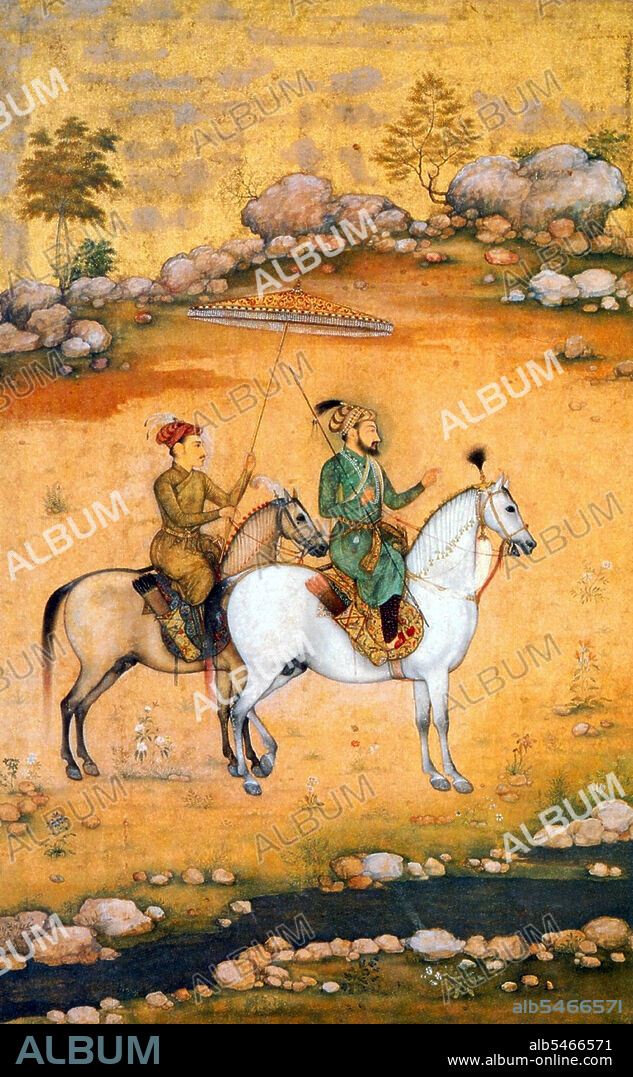alb5466571
Mughal Emperor Shah Jahan and his eldest son Dara Shikoh on horseback. Miniature painting by Govardhan, c. 1640.

|
Añadir a otro lightbox |
|
Añadir a otro lightbox |



¿Ya tienes cuenta? Iniciar sesión
¿No tienes cuenta? Regístrate
Compra esta imagen

Título:
Mughal Emperor Shah Jahan and his eldest son Dara Shikoh on horseback. Miniature painting by Govardhan, c. 1640.
Descripción:
Ver traducción automática
Shahab-ud-din Muhammad Khurram Shah Jahan I (1592 -1666), or Shah Jahan, from the Persian meaning king of the world, was the fifth Mughal ruler in India and a favourite of his legendary grandfather Akbar the Great. He is best known for commissioning the Phadshahnamah as a chronicle of his reign, and for the building of the Taj Mahal in Agra as a tomb for his wife, Mumtaz Mahal. Under Shah Jahan, the Mughal Empire attained its highest union of strength and magnificence. The opulence of Shah Jahans court and his famous Peacock Throne was the wonder of all the European travelers and ambassadors. His political efforts encouraged the emergence of large centers of commerce and crafts-such as Lahore, Delhi, Agra and Ahmedabad-linked by roads and waterways to distant places and ports. He moved the capital from Agra to Delhi. Under Shah Jahan's rule, the Red Fort and Jama Masjid in Delhi were built, the Shalimar Gardens of Lahore, sections of the Lahore Fort and his father's mausoleum.
Crédito:
Album / Pictures From History/Universal Images Group
Autorizaciones:
Modelo: No - Propiedad: No
¿Preguntas relacionadas con los derechos?
¿Preguntas relacionadas con los derechos?
Tamaño imagen:
3300 x 5339 px | 50.4 MB
Tamaño impresión:
27.9 x 45.2 cm | 11.0 x 17.8 in (300 dpi)
 Pinterest
Pinterest Twitter
Twitter Facebook
Facebook Copiar enlace
Copiar enlace Email
Email
